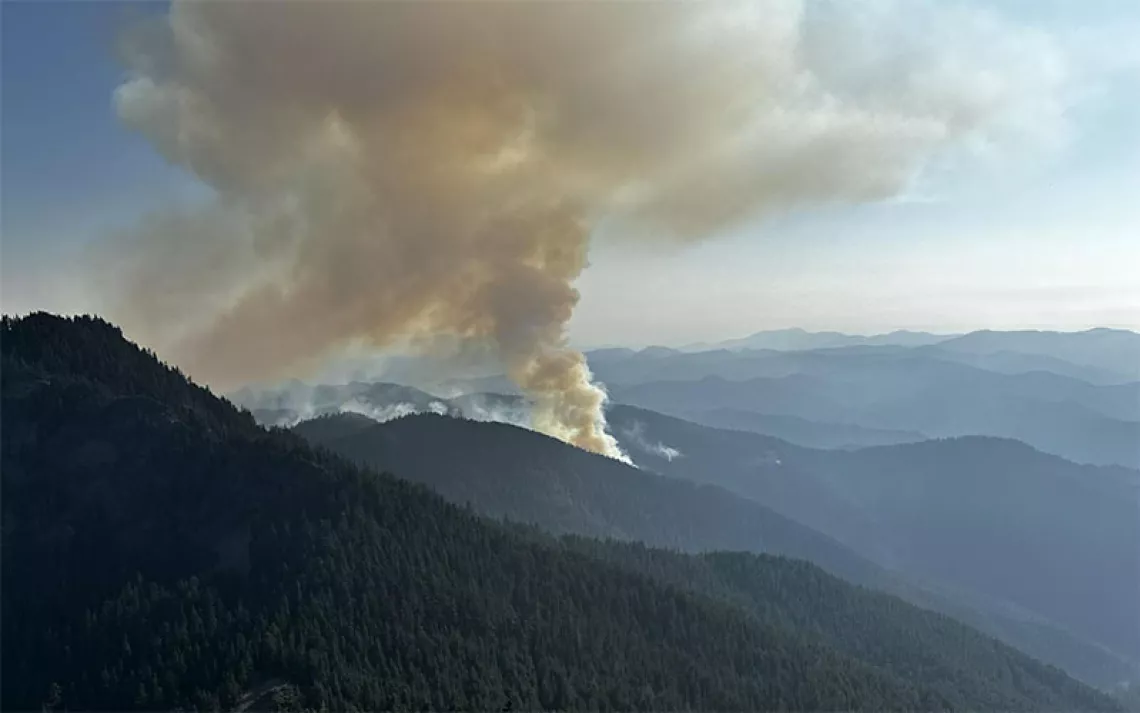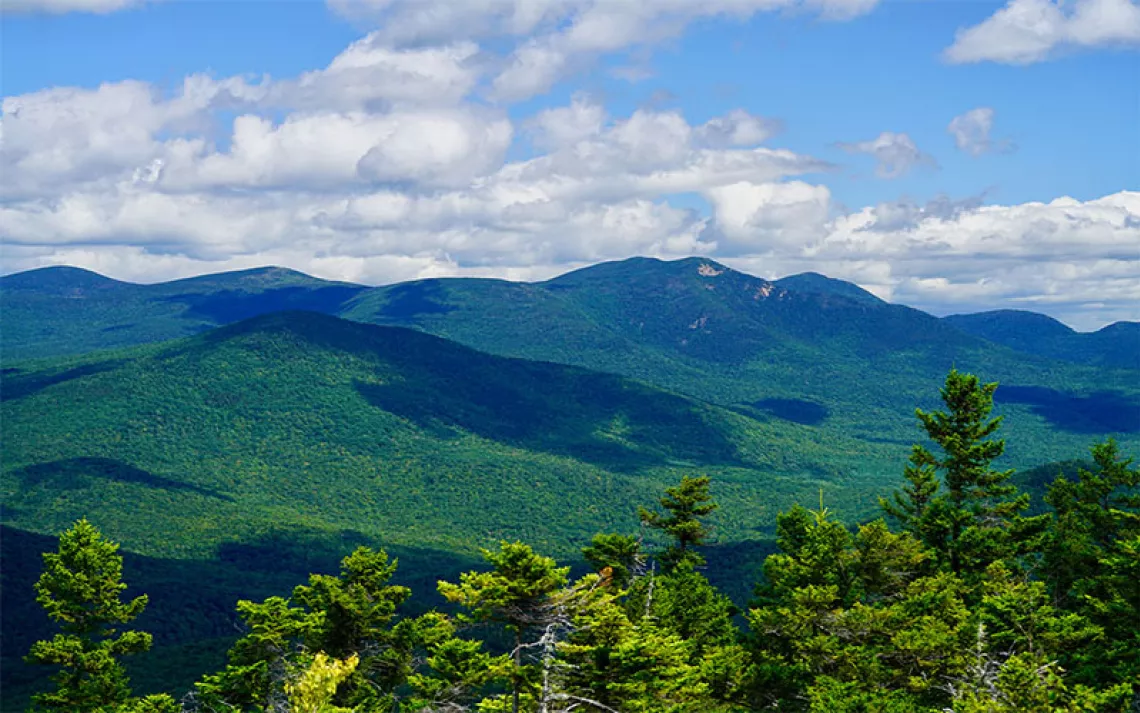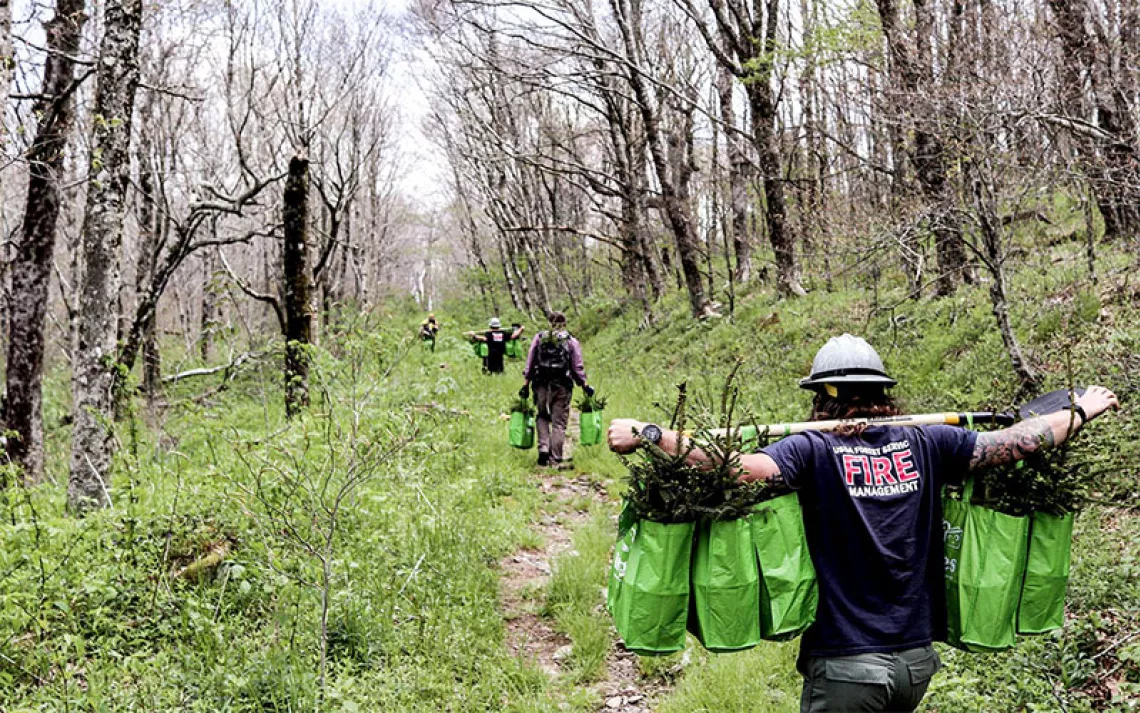Pulp Friction
Why should we have to choose between clearcutting and funding kids’ schools?

Clearcut logging on state forest trust lands in Oregon and Washington destroys wildlife habitat and causes forest fragmentation.
|Photos by Jim Yuskavitch
Hemmed in by private industrial timberland and national forest, the 93,000-acre Elliott State Forest, just northeast of the Oregon timber and port town of Coos Bay, is a special place. In a region where the past decade has seen private equity firms buying forestlands to meet the growing demand for softwood products in Southeast Asia, its old-growth forests and streams are habitat for northern spotted owls, marbled murrelets, wild Pacific salmon, and a host of other native species. While the Oregon Coast Range has been a theater of aggressive logging for more than a century, remarkably half of the Elliott State Forest has never been cut, making it all the more valuable as a stronghold of native forest in a sea of fragmented habitat. But recently, "for the sake of the children,” the state of Oregon has put the forest up for sale.

Elliott State Forest still has half of its original old-growth forest. Oregon’s plan to divest itself of such an ecologically valuable piece of real estate has its roots in legislation that was passed when new states entered the Union. Beginning with Ohio in 1803, Congress granted sections of land to each township to benefit public schools. It also set some basic rules on how they could be used or sold. Today there are about 46 million acres of state trust lands, mostly in the West.
The income derived from these trust lands for education is substantial, although its source varies from state to state. In 2005, the nine westernmost states had more than $14 billion in trust funds derived from these lands, about 90 percent of which went to public education. Energy development is the major source of trust lands income in the Rocky Mountain and Southwestern states, while timber sales feed the school fund cash stream in Washington, Idaho, and Oregon. That’s big money, and it drives states to prioritize extractive industrial development on trust lands over conservation. In the Rockies, energy development runs up against efforts to protect sage grouse, mule deer, and pronghorn antelope. In Washington and Oregon, logging on school trust lands is damaging habitat for a host of at-risk animals such as northern spotted owls, marbled murrelets, Pacific fishers, and numerous runs of wild Pacific salmon and steelhead. Now, with Elliot State Forest on the block, conservationists are advocating to keep the forest in public ownership and press the two Pacific Northwest states to make managing state forestlands for their natural resources just as important as producing school revenue from logging.
With their abundant supply of timber in the Cascade and Coast Ranges, Oregon and Washington have historically been aggressive in logging these trust lands to help fund public schools. Oregon has 750,000 acres of Common School Fund lands, which generated $54 million to the state’s K-12 schools in 2015. Washington has 2.1 million acres of forest trust lands, which contributed $120 million to state schools in 2014. Conservationists and the states have been at odds over how to manage state forests, because the states believe they have a legal mandate to maximize logging to fund schools, and that trumps environmental protections. For example, the Washington Department of Natural Resources has been reluctant to implement a long-term conservation plan for marbled murrelets on state forests because it believes that would reduce logging income and put an undue burden on its fiduciary duty to the Common School Trust.

Northern spotted owls are one of many species that are threatened by logging on state forest trust lands. The Elliott State Forest is a poster child for this long-running conflict. “Where the Bureau of Land Management and the Forest Service have transitioned out of the practice of clearcutting in response to public opinion and for the environmental benefits, the state was still clearcutting 500 to 800 acres of old-growth forest in the Elliott State Forest every year,” says Josh Laughlin, executive director of Eugene-based Cascadia Wildlands.
Conservation groups have tried hard to push the Oregon Department of Forestry, which manages the forest, toward a new management paradigm. When that failed, they sued the state, arguing that it was inadequately protecting old-growth forest stands where marbled murrelets, an endangered species, were nesting. The lawsuit was dropped after the state agreed to cancel a number of timber sales in the Elliott State Forest, along with sales in two other state forests, and made changes for providing additional habitat protections. “It really put a kink in their logging plans for the Elliott,” Laughlin says. In recent years, timber sales from the forest generated $8 million to $11 million annually to Oregon’s Common School Fund. After hammering out a settlement that reduced logging levels, the Oregon Land board decided that the forest was now going to lose money, and it put the parcel on the market, with buyers’ proposals due by November 15, 2016. (The state had previously sold off a few small parcels in order to meet school funding deficits.) Some estimates put the value of the forest as high as $400 million. Cascadia Wildlands, the Sierra Club, and other conservation groups are now working to find a way to keep the forest in public hands.
The fundamental question is whether these publicly owned state lands are private trusts dedicated exclusively for generating income for public education, or if they are public trusts that should also include environmental mandates. A 1984 Washington Supreme Court ruling over a logging dispute on trust lands has been interpreted by Washington State officials to mean the former.
But many environmental attorneys disagree with that interpretation. “We have developed numerous arguments that the state forests are public trusts and should be managed for the benefit of everyone,” says Peter Goldman, director and managing attorney of the Washington Forest Law Center, whose group is currently opposing a proposed salvage-logging plan on 15,000 acres of state forest trust land in Okanagan County. They argue that the 1984 ruling simply said that the state cannot enact legislation solely for the purpose of benefiting private interests, and those state lands are in fact public trusts lands, and that managing them to benefit schools should not preclude other public benefits, such as wildlife, fish, clean water, and recreation.
There may soon be an opportunity to revisit the question in court. In March 2016, officials from Linn County filed a $1.4 billion class action lawsuit against the state of Oregon on behalf of 15 counties, charging that the state has not been maximizing logging revenue over conservation values on its trust lands, ignoring its responsibility to manage the land for its greatest value, which counties and school districts define as timber revenue. “If they win,” says Chris Smith, state forest conservation coordinator for the Oregon Chapter of the Sierra Club, “it could set a precedent that state forests should be managed as industrial tree farms.” But it’s a gamble, too, because it will offer public trust advocates an opportunity to present their case.
For now, the advantage lies in the status quo as school districts, in the western half of the country especially, continue to count on school trust land income as a stable, permanent source of income. But whether school trust lands income comes from logging, energy development, mineral extraction, or other natural resources extraction, the mandate that trades environmental health and protection to fund public education is being challenged. While legally establishing these lands as public trusts that must be managed for broader conservation values will help, the long-term solution is to find alternative, reliable public school funding sources. And so far, no one seems to have any great ideas on how to make that happen.

Conservationists argue that state forestlands have many natural and ecological values, including fish and wildlife habitat, clean water, and opportunities for outdoor recreation.
 The Magazine of The Sierra Club
The Magazine of The Sierra Club



